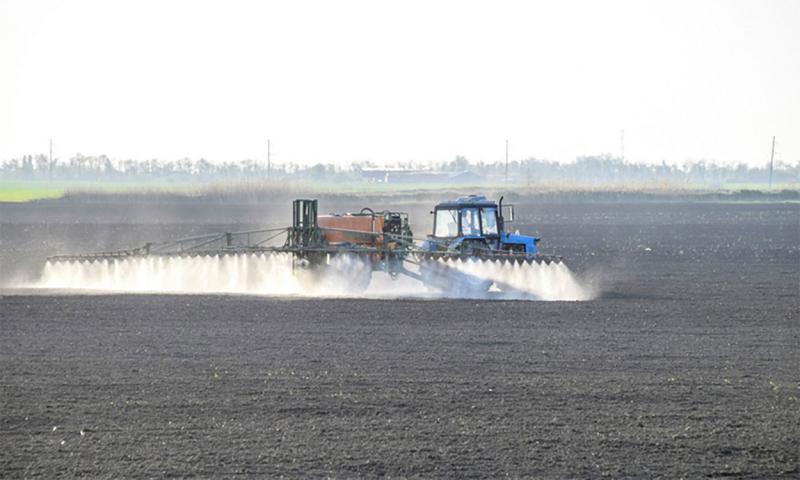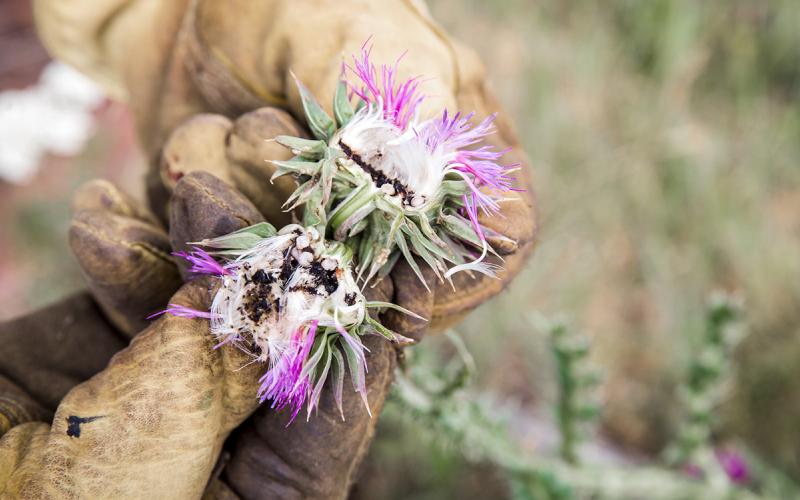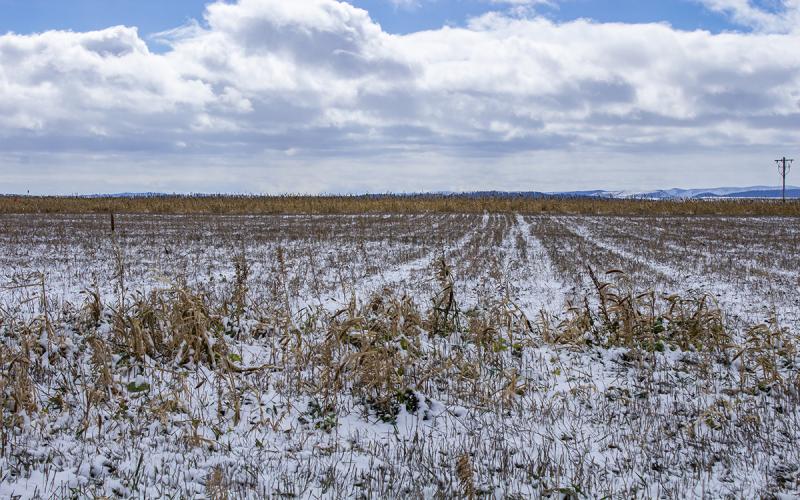Written collaboratively by Eric Jones, Philip Rozeboom, David Vos, and Jill Alms.
Many South Dakota farmers are planting conventional (non-GMO) soybean to receive a premium. Compared to GMO soybean varieties (including Roundup-Ready, Liberty Link, Enlist E3, and Xtendflex), weed management in conventional soybean is more difficult and requires more planning to be successful. While difficult, weed management is not impossible in conventional soybeans. Recall that prior to 1996 (the year Roundup-Ready soybean was introduced), all soybean varieties were “conventional.” Below is an outline that can help improve weed management in conventional soybean.
Choosing fields to be planted with conventional soybean.

Before planting, ask yourself these questions:
- Am I planting conventional soybean in fields with a history of high weed density?
- Are there herbicide-resistant weeds present in these fields?
- Are there weeds present in these fields that are difficult to control with the tactics available?
Since there are limited options for weed control in conventional soybean, do not set yourself up for failure by selecting fields that have a known history of weed problems. Select the fields with minimal weed pressure.
Start clean.
Fields to be planted with conventional soybean need to start weed free, whether that is achieved with a burndown herbicide application or tillage. An important note on burndown herbicide applications is that glyphosate (Roundup, others) can be applied before planting conventional soybean as this herbicide has no residual activity. However, if 2,4-D (many tradenames), dicamba (Banvel, Clarity, others), or halauxifen (Elevore) is to be applied, then a preplant interval must be followed to ensure that the soybean crop is not injured. The preplant interval is dictated by the herbicide and the rate; refer to the specific label for the duration of the preplant interval. Paraquat (Gramoxone, others) and saflufenacil (Sharpen) are viable burndown herbicides as well. Use multiple herbicides in the burndown application to increase the spectrum of control and reduce the selection pressure on resistant weeds. Also consider including an herbicide with residual activity to control later-emerging weeds before planting. Metribuzin (Mauler, TriCor, others) can improve the activity of other burndown herbicides while providing residual control.
Do not let weeds germinate.

Strong preemergence herbicide programs are a must when growing conventional soybeans. Since there are limited postemergence herbicide options to control weeds, controlling the weeds before germination reduces the reliance on the limited options. Ideally, preemergence herbicide programs should contain at least two different herbicides, but three different herbicides are preferred. Including multiple herbicides in the application will increase the spectrum of control and reduce selection pressure on resistant weeds. Additionally, including multiple herbicide groups can hedge control failures caused by environmental conditions (specifically precipitation) by including herbicides with different chemical characteristics.
Postemergence weed control.
Even if a very strong preemergence herbicide program is utilized, weeds will likely have to be controlled with postemergence herbicides. Weeds should be less than 4 inches in height to ensure effective control. Frequent scouting will likely be needed for timely application. Grass weeds can be controlled with graminicides, including: clethodim (Select, others), sethoxydim (Poast, others), fluazifop (Fulsilade, others), or quizalop (Assure, others). An important note is that the graminicides will only control grass weeds. Imazethapyr (Pursuit, others) and imazamox (Raptor, others) can provide grass control while controlling select broadleaf weeds.
The PPO-inhibiting herbicides, acifluorfen (Ultra Blazer), fomesafen (Flexstar), lactofen (Cobra), and others, will be relied on to control kochia and waterhemp. Similar to the burndown and preemergence applications, utilize multiple herbicide groups to increase the spectrum of control and reduce selection pressure on resistant weeds. Kochia and waterhemp resistance to these herbicides has not been reported in South Dakota, but it has been documented in Iowa, Nebraska, and North Dakota. Other herbicides, such as bentazon (Basagran); and ALS-inhibiting herbicides, thifensulfuron (Harmony, others), chlorimuron (Classic, others); are viable options for other broadleaf species, such as cocklebur, lambsquarters, and velvetleaf. Refer to specific labels for weeds controlled.
A residual herbicide should be included in the postemergence program to control later-emerging weeds. The later-emerging weeds will not reduce yield but will add seeds to the soil bank that will have to be managed in later growing seasons and could reduce harvest efficiency.
Integrate non-herbicide control tactics.

While not as effective as herbicides, non-herbicide tactics should be utilized to improve weed management and reduce selection pressure. The simplest non-herbicide tactic for effective weed management would be to select fields with minimal weed pressure. Interrow cultivation, narrow row spacing, and increased planting rate can be effective at managing weeds by shading and competition. Weeds that are not controlled with herbicides should be hand weeded to ensure that the seeds produced are not returned to the soil seed bank and will be managed in subsequent growing seasons.
The conventional soybean herbicide demonstration data can be utilized to determine what herbicide programs will be the most effective for the weed species present in your fields. An extensive herbicide and weed species control list can be found in the latest South Dakota Pest Management Guide: Soybeans. Be sure to utilize herbicides and tactics that will control the weed species present in your fields.


